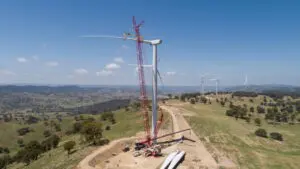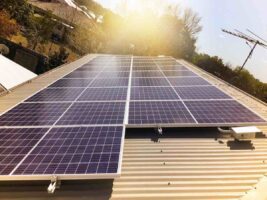Participation in the Coalition’s cornerstone climate change policy – the Emissions Reductions Fund – looks set to be patchy at best, a new report has found, with businesses likely to bypass the much criticised scheme in its first year.
The report, released on Wednesday by energy and environmental market analysts RepuTex, suggests the Abbott government could bypass the Senate to implement its Direct Action emissions reduction scheme by developing new ‘regulations’ under the Carbon Farming Initiative Act, with funds allocated in the forthcoming budget.
The report notes, however, that taking this path would result in the ERF being streamlined, with legal limitations likely to restrict the Clean Energy Regulator’s ability to enter into contracts with successful bidders or implement any ‘baselines’ or ‘penalties’.
“While new legislation can be drafted to the government’s choosing, new regulations must be consistent with the legislation under which they are created. New mechanisms such as baselines or penalties may not fit with the original objective of the CFI Act, which is to increase abatement” said RepuTex Executive Director, Hugh Grossman, speaking in Melbourne.
“Likewise, the Clean Energy Regulator’s ability to run auctions or enter into contracts would be outside the scope of the CFI Act, meaning that the design of the ERF would need to change,” said Grossman.
“It is possible that the Department of Environment could run auctions and enter into contracts with winning bids, meaning the show would go on. However, the ERF would be operated under a patchwork structure, with different market rules and lower transparency.”
The report – titled “Ready or Not, the Emissions Reduction Fund is Coming” – also casts serious doubt over the participation of business in the scheme’s first year, with emissions reduction credits, referred to as Australian Carbon Credit Units (ACCUs) likely to be scarce at the beginning of FY15 due to the requirement for the government to develop methods and that projects be pre-approved and registered.
This will be further complicated, says RepuTex, by competition between the ERF and the Carbon Price Mechanism “true-up” in February 2015 – whern companies liable to the carbon tax pay their final carbon liability for 2014, or source offsets from the CFI, even should the CPM be repealed earlier.
“Given the continued operation of the CPM true up through to February 2015, very few businesses from the land use sector are likely to bid into the ERF under $22, with these firms likely to bid high or bypass the ERF early auction rounds,” said Grossman.
“Effectively, this means the ERF would need to match the current CPM offset price in order to be assured of enticing sellers of abatement from the land use sector.”
According to RepuTex, the low participation from the land sector in the first half of FY15 may open the door for high emitting industries to access significant amounts of ERF capital.
“The low number of bidders from the land use sector in the first year of the ERF may provide a significant opportunity for early movers outside of the CFI, such as high emitting industries, to secure higher priced contracts in place of CFI participants” said Mr Grossman.
“In such an instance there is likely to be a large amount of capital available through the ERF for large emitters. We currently forecast that ERF funding is unlikely to be exhausted in the first year, leaving a large amount of capital available for even the largest projects” said Mr Grossman.







